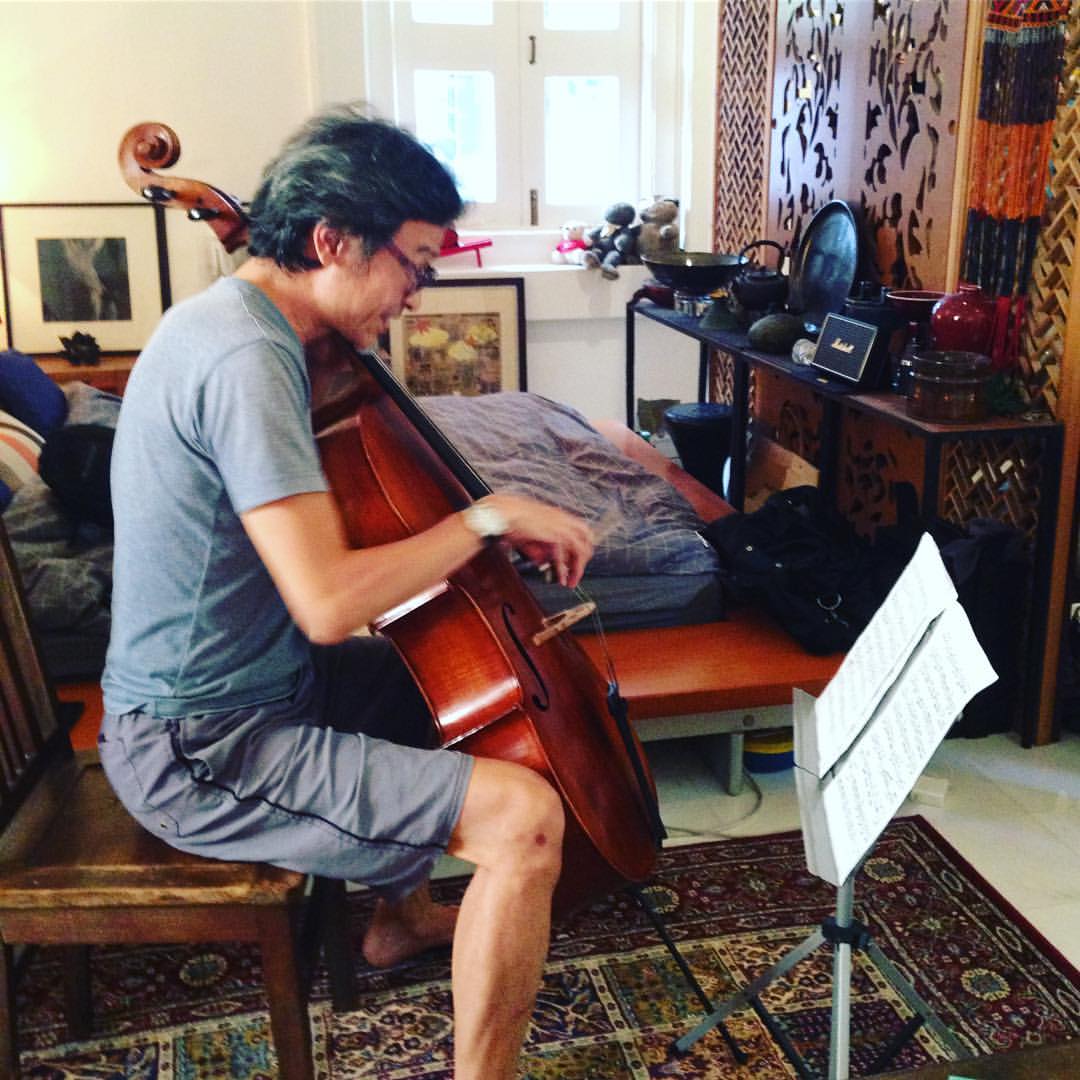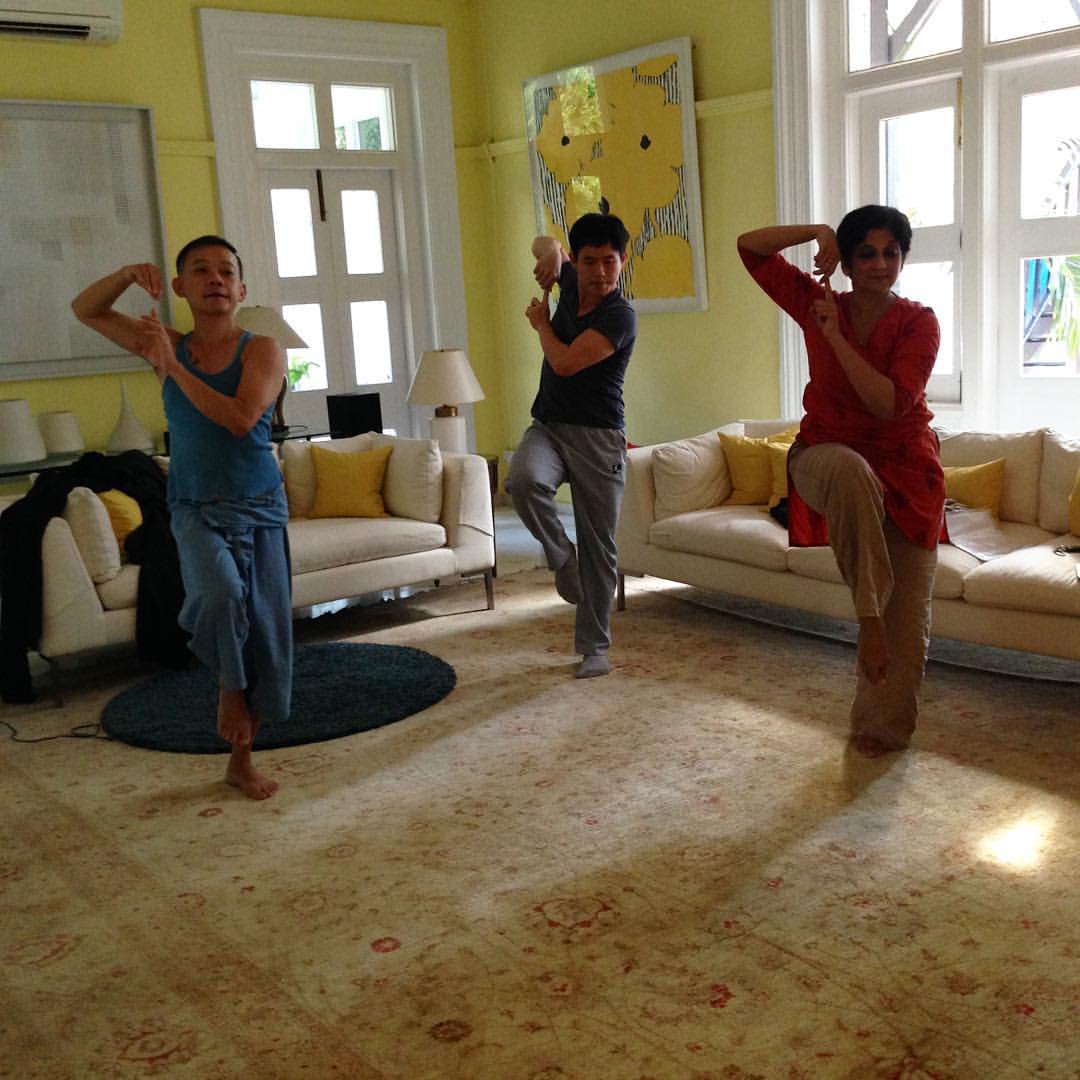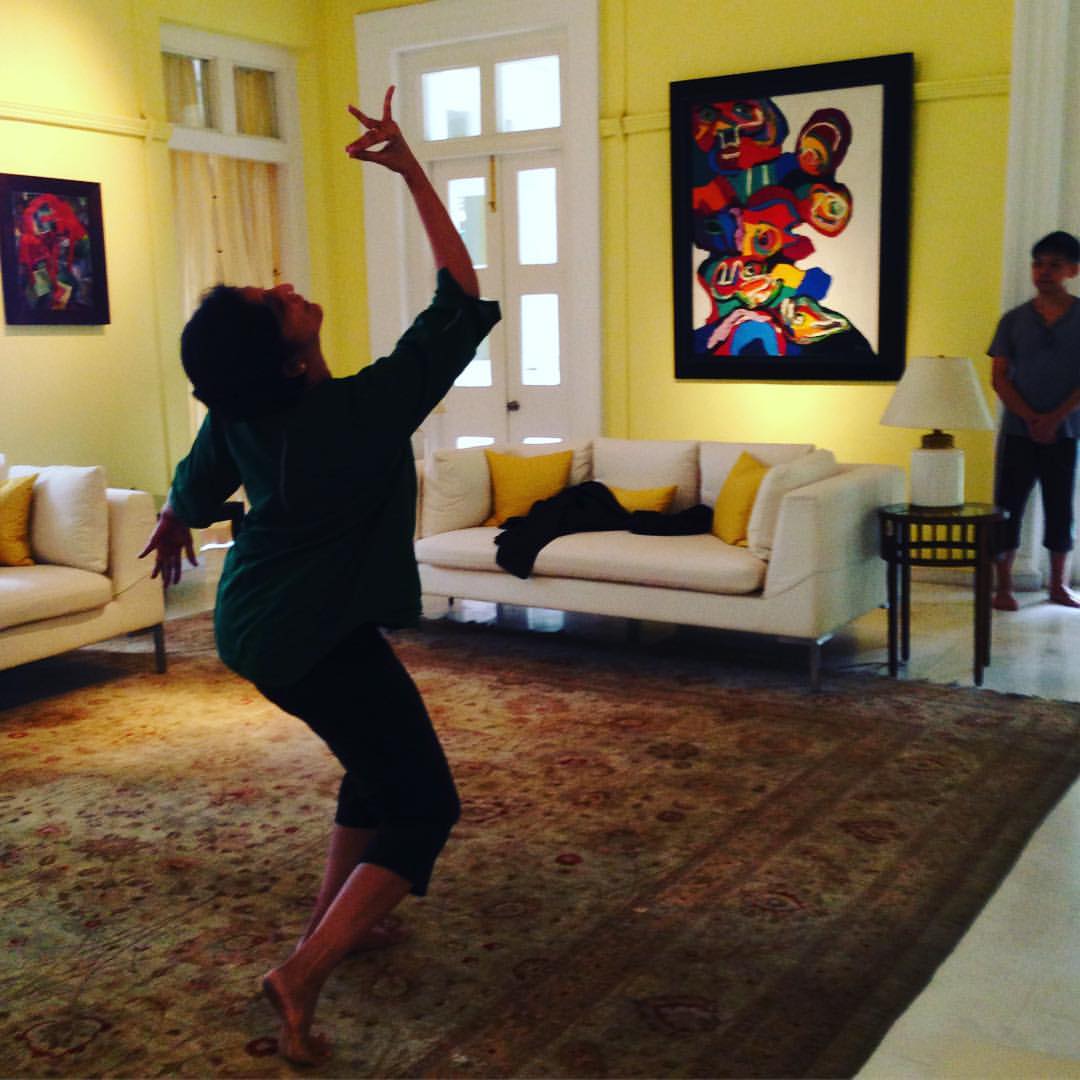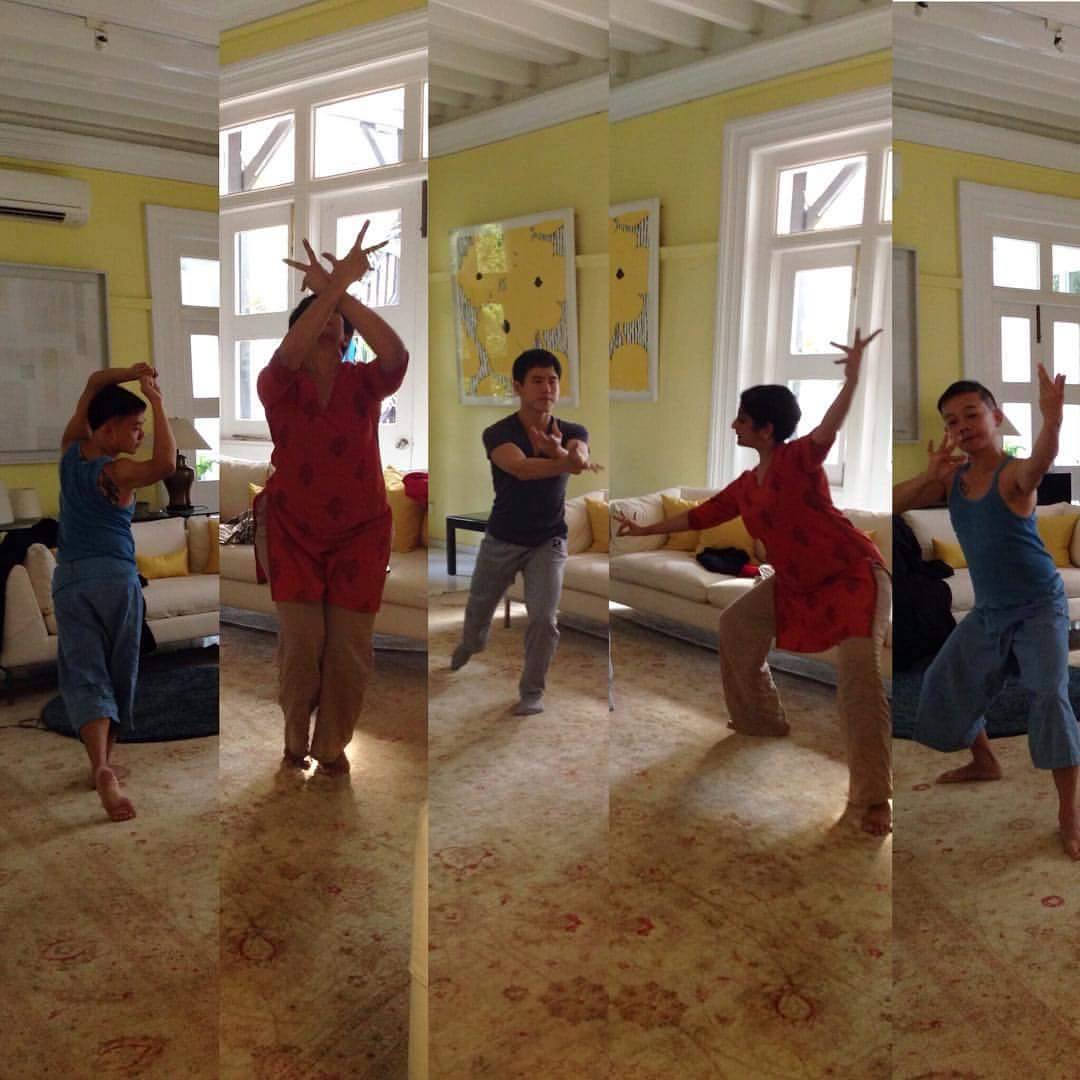Some years ago, I was invited to give a talk on the subject of "safe dance" in the context of Bharatanatyam. What an alien term! I don't think I ever heard it used during my years of engagement with the dance form. During the training, it has largely been about getting the movement correct in the prescribed manner. However, as I delved into teaching, practice and choreography, as well as working with an 'ageing' body (whatever that means!), the question "am I harming my own or my student's body with this movement?" would constantly enter my mind.
I was living in Chennai at the time, learning Yoga from Ravi Shankar of Yoganidhi and also receiving treatment for a dance injury from the sports physician Dr. Kannan Pugazhendi. Conversations with both of them helped address some of the questions I had as well as provided me with possible ways forward - not just with the presentation I had to make, but my own dance journey.
I remember searching for simple definitions of dance. This was way back in 2007. Here is one that I came across at that time - 'the movement of the body in a rhythmic way, usually to music and within a given space, for the purpose of expressing an idea or emotion, releasing energy, or simply taking delight in the movement itself.'
Simple delight - yet another alien phrase. I have a vague recollection of it. I must have been just 7 and dancing the delightful Pooja Dance taught to me by my very first guru Sri KP Bhaskar. But then came the quest for that elusive thing called "perfection" with the emphasis on rigour, repetition and performance. Simple delight was gradually subsumed. Surely there must be a balance?
Given that the body is the key instrument through which dance happens, the key to joy and passion for movement must lie in the philosophy of reveling in the body? It is when I love my body that I would work through it with awareness and motivation (whatever its structure and form) to keep it strong, flexible and also safe. There are systems in Indian culture that, if introduced into core dance training, could be highly beneficial to the dancer. Practices such as yoga and kalaripayatu can greatly enhance flexibility and strength.
Bharatanatyam - Some Problem Areas
As a dance form there are some problems inherent in Bharatanatyam that need addressing. These fall broadly into two categories - the physical and the emotional-psychological. My focus in this piece will be the physical aspect.
In Bharatanatyam, the main parts of the dancer's body that are generally affected are the knees, lower back, neck and to a certain degree the feet, if the foot stamping is not done correctly. Nearly 70 to 80% of injuries in dance are avoidable provided the progression through the dance is gradual. In general it is advisable that each movement be broken into smaller parts and then re-created and learned slowly to prevent injury.
1. The stamping of feet has become an important part of the dance form and the general instruction given to students is 'Bang harder. Louder!' This can cause tremendous stress to the feet, knees and lower back. It is further accentuated if the floor is not appropriate. Cement flooring is harmful to the feet; the ideal floors are wooden or sprung. It is important that the entire foot hits the ground so as to form a vacuum. This prevents the stamping from being localised on the heel. The idea is to distribute the weight.
2. The basic stance in Bharatanatyam involves the bending of the knees to form a triangular shape. This is called the 'aramandi' or 'half-sitting' position. This bending of the knees obviously causes great stress on the knees. But yet there are precautions one can take. It helps, for instance, to prepare for that position slowly, easing into it over a period of time. Also, it would help to begin with preparatory exercises to turn the knee out, to ensure that the movement happens at the hip and not the knee. Essentially the knees should not have to take the load.
3. From the half-sitting position, the dancer often moves down into a full squatting position. One particular movement involves jumping and then banging the knee on the ground in this position. I have always been wary of subjecting myself and my students to this movement. Minimal impact on the knee should be explored. Knee pads can be used to protect the knees. In training it is important to slow down the form and to practise going down smoothly. Moreover it is important to keep in mind that in a complex and demanding form such as Bharatanatyam, too many repetitions can cause fatigue and injury to the muscles.
Instead, visualisation is a process that could be explored to minimise the number of repetitions. With this method, the movements get stored in the lower brain, the cerebellum, as a stroboscopic picture. Audio-visual technology can also be used in this approach. The idea is never to overuse the muscles.
Some Myths
1. It is common for Bharatanatyam teachers to advise their students not to drink water during the practice sessions. This is a myth. It can lead to dehydration especially during a performance when the dancer is not only perspiring profusely but is also subjected to intense lighting.
2. It is believed that weights training is not beneficial and affects the flow of movement in dance. Again this is a myth. Strength training, especially for women, is very important.
From my personal experience and observation, an important aspect that has been neglected in classical Indian dance are the warm ups, cooling down, recovery during breaks, and stretches. Dance puts physical stress on the body. The system needs a counterpoint, to physically relax it.
YOGA - A COUNTERPOINT
As a Bharatanatyam dancer, I cannot over-emphasise the tremendous role that yoga can play in the life of a dancer. Yoga is not so much a workout but an activity that brings into play all the different facilities like stretch, contract, twist, joint mobility and load. By working with all these capacities the body is relieved from stress. Yoga is so well placed to achieve this physical relaxation both prior to dance without taxing the body, and after dance.
Extremely important is the aspect of breath control in Yoga. Breath is considered to be energy. To the extent that we are in control of breath, we are in control of energy. And energy flow is important in dance. We need to harness this energy for optimum performance. In Yoga, breath is the key tool for harnessing this energy.
It is believed that Yoga can train a person to develop such control over breath such that one can 'secretly' recharge oneself without showing it on the face. It is a system that helps the dancer to internalise the breath so that even if one is lost in the dance, breath is still in control. It becomes such a natural part of the movements.
Some Yoga postures are highly beneficial in optimising the functioning of the entire system. For example in the Sarvangasana (shoulder stand), so many positive effects are believed to take place n the inversion, not just to the external parts of the body but to the internal organs as well. It is believed to optimise every potential function of the body.
I discussed the benefits of 'visualisation' earlier. Yoga helps the dancer enter that relaxed space to visualise and internalise the right movement. It heightens observation, awareness, control and balance, getting the dancer in touch with her body.
It is interesting to note that Yoga has been found to balance the menstrual cycle, which is known to play havoc in stressful physical activity such as dance. Indian classical dance forms being fairly emotionally charged, Yoga helps pacify those emotions.
In addressing the emotional-psychological aspect of the dance form, one would have to look into themes, expression of emotions and religious devotion which serves as the underlying spirit of the form. The class and caste associations as well as gender stereotyping could be other areas for discussion.
Moving Inward
Over the decades, the message that I seemed to be receiving from the various teachers I learnt from was that Bharatanatyam was about that connection to a higher force. It was not meant to be entertainment or exhibition oriented. I began to understand from the training that ours was not a conquest of external space but of using that space to go inward, if that makes sense. One part of our dance form doesn't even require that much external body movement. And yet, what I was watching by way of performances often appeared to contradict this messaging. Also, the costumes and jewellery often come across as trapping rather than freeing the dancer. But that's a topic for another ramble.
I believe that exploring deeply the other aspects that make up our dance form and to shift the emphasis from just the physical... from how a movement looks, to how it feels. From the drudgery, stress of competition and performing to satisfy the audience gaze... to pursuing one's own excellence, passion and joy. Could this be the crux of moving towards safer and joyful dancing? I'm calling it ahimsa ananda nritya!!
NIRMALA SESHADRI
Snippets from my essay presentation “Making Dance Safe, Joyous & Ecstatic” (2007), written in consultation with:
Dr. Kannan Pugazhendi - Sports Physican & Director, SPARRC Institute, Chennai
Mr. S. Ravi Shankar - Yoga Expert, Teacher & Director, Yoganidhi, Chennai
































































